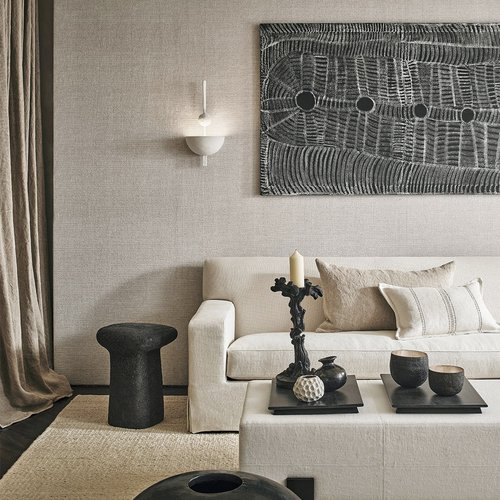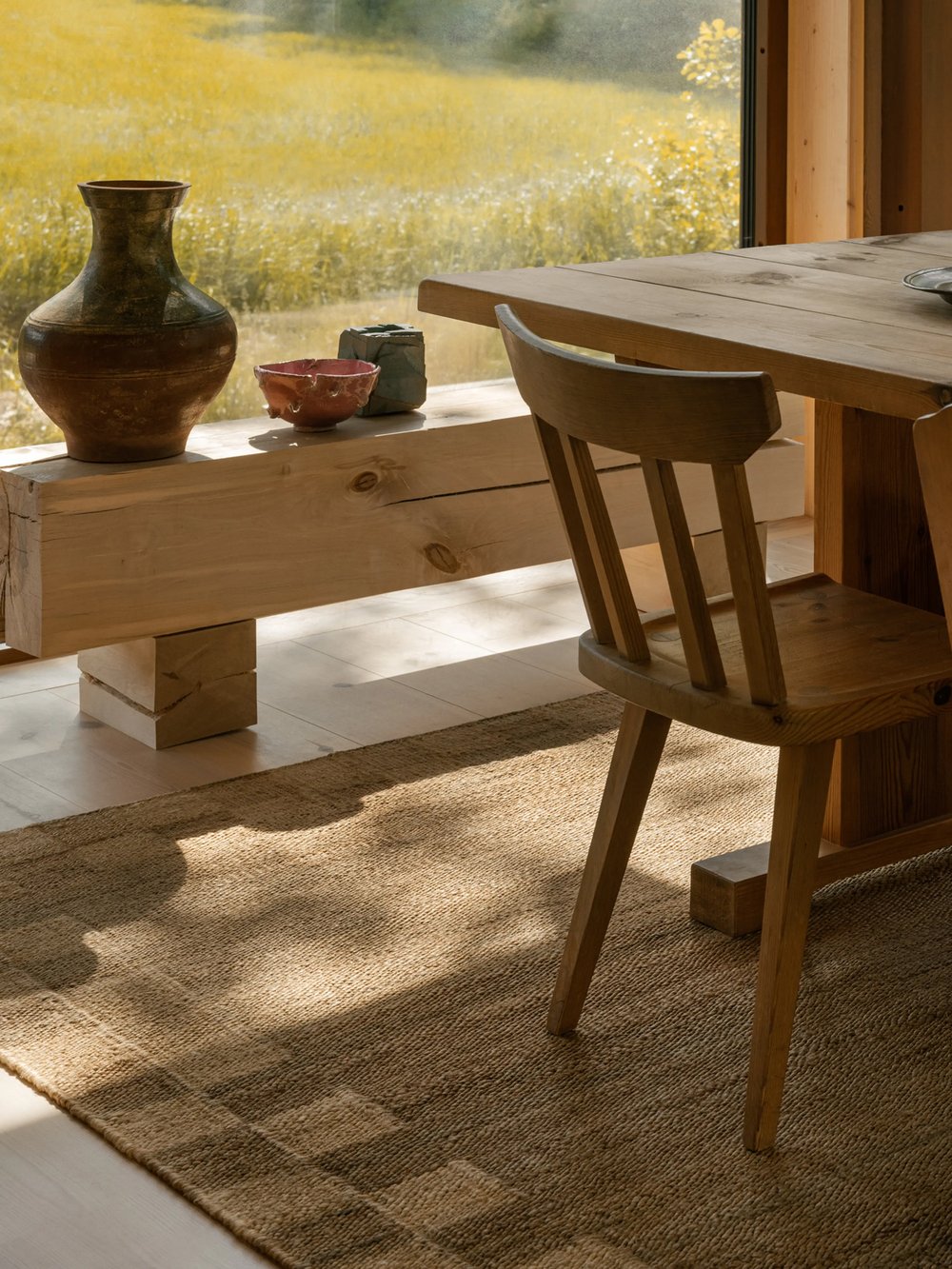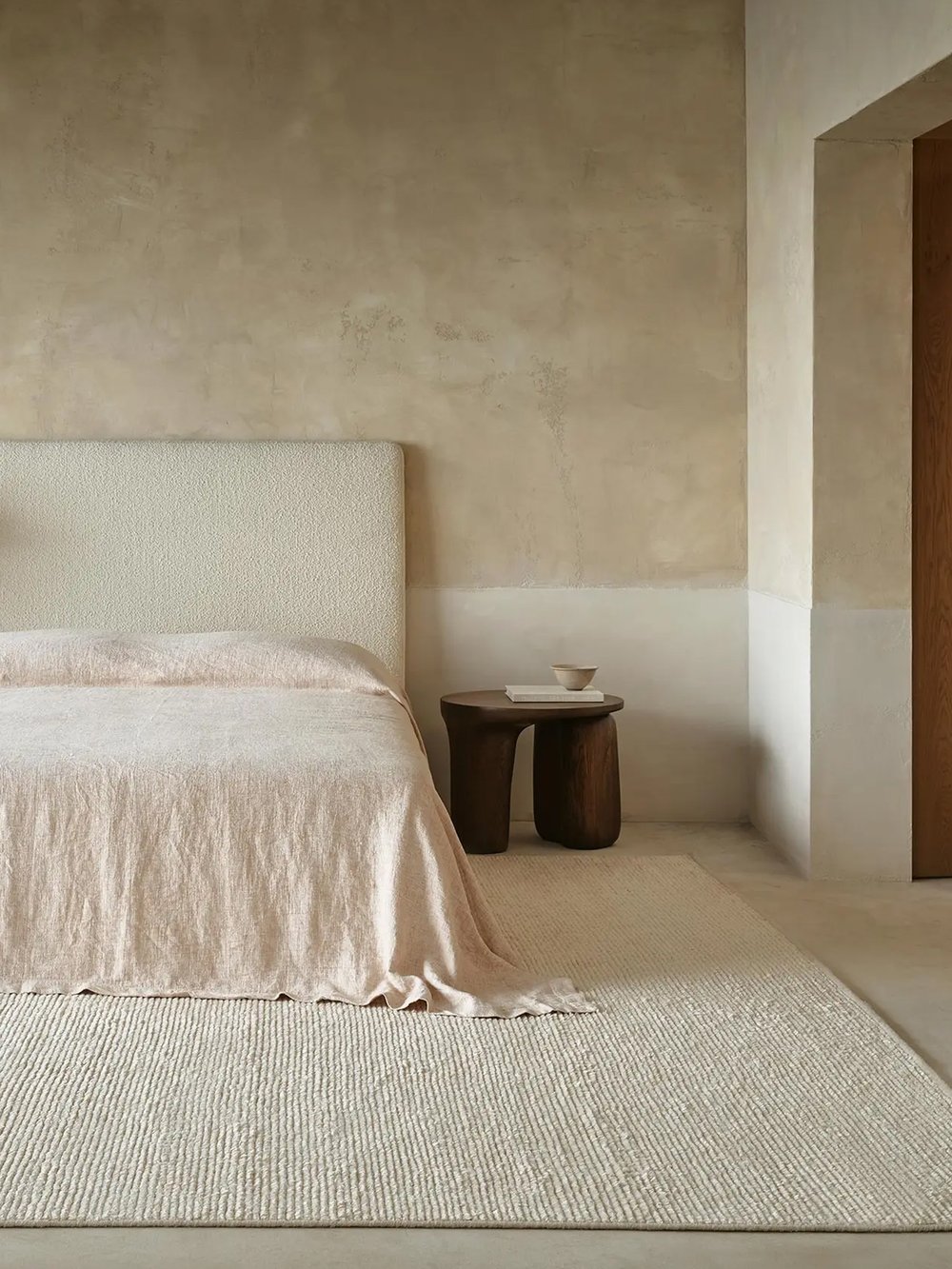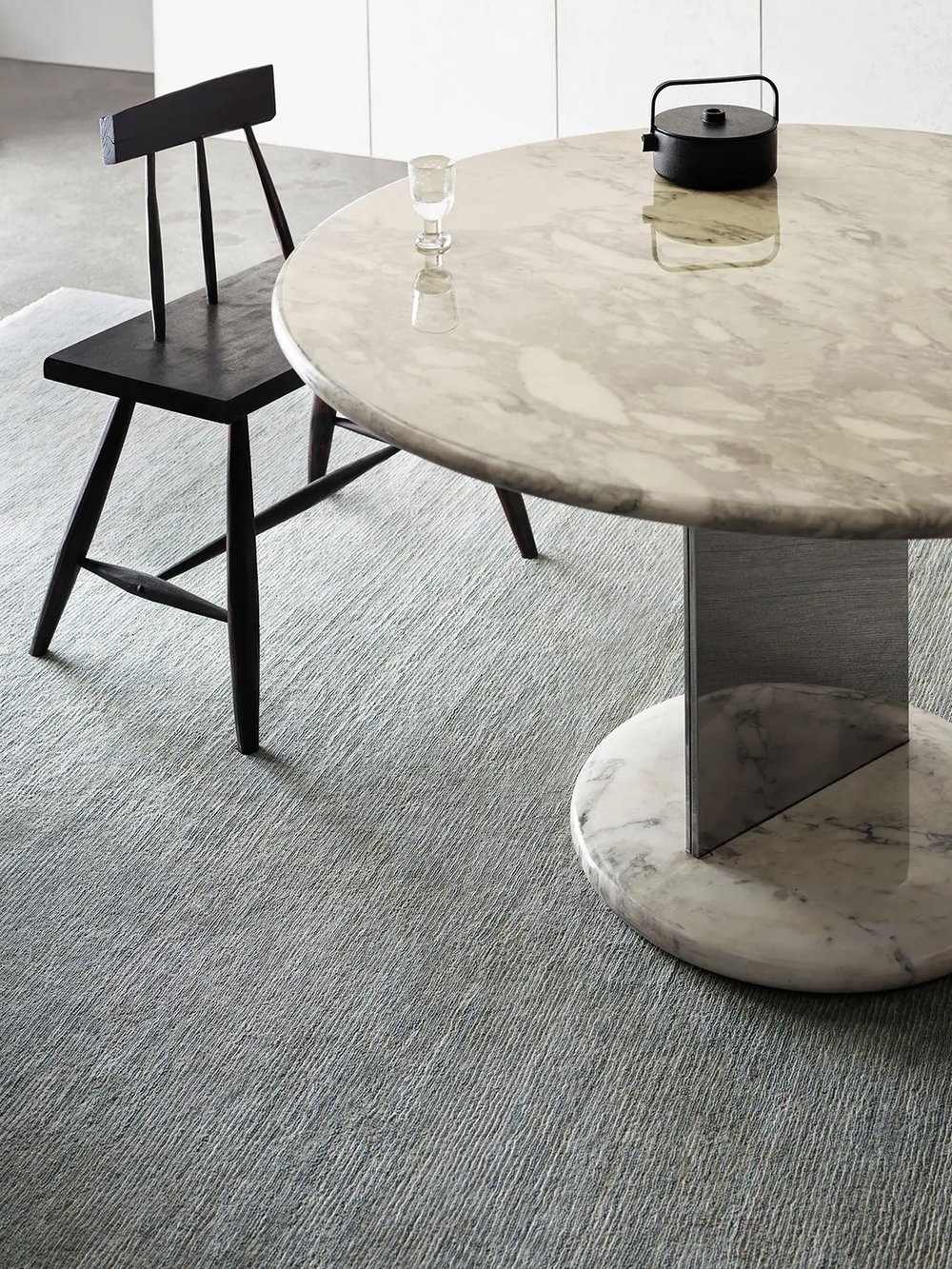
5 min read
The Fabric of Wellbeing: Choosing Upholstery that's Good for Health and the Planet
WLLW investigates the benefits of four upholstery options for our health and their environmental impact.

6 min read
How to choose a rug crafted from natural materials that support the planet and your wellbeing.
When selecting a rug, it's important to think beyond aesthetics and dimensions. Rugs, much like upholstery, can be hidden sources of harmful chemicals and pollutants. These substances contribute to poor indoor air quality and may cause health issues such as headaches, dizziness, and irritation of the eyes, nose and throat. The primary culprits include toxic dyes, synthetic fibers, and chemical adhesives that release Volatile Organic Compounds (VOCs). Consequently, when choosing an alternative, natural fibers are an excellent place to start.
These fibers offer a healthier option compared to synthetic rugs, which are often treated with ‘forever chemicals’ like Per- and Polyfluoroalkyl Substances (PFAS) which are used in waterproof and stain-resistant products. A 2021 study revealed that homes with PFAS-treated rugs had 45 percent higher levels of these chemicals in household dust. Moreover, synthetic fibers, derived from nonrenewable resources, aren’t biodegradable. Unfortunately, a staggering 91 percent of plastic-based rug materials end up in landfill, while only 5 percent are recycled.
To make informed decisions, understanding the production process and seeking independent certifications is crucial. We will explore the benefits of wool, linen, organic cotton, and other natural textiles. Leading the way in sustainable craftsmanship are brands such as Armadillo, Nordic Knots, Awanay, Miksi, Cappelen Dimyr along with new and vintage rug dealer FJ Hakimian, whose commitments set a standard for the industry.



Fibers like jute, sisal, seagrass and hemp originate from around the world. Jute, the ‘golden fiber’, thrives naturally in the humid fields of India and Bangladesh. Sisal, derived from the agave plant, is sourced from arid areas of Africa and requires little water. Seagrass comes from the coastal wetlands of Asia and is harvested to maintain ecological balance. Growing in diverse climates from Asia to North America, hemp is fast-growing and can be grown without herbicides or pesticides.
These natural fibers are hypoallergenic and resistant to dust mites, mold and mildew, reducing allergy and asthma symptoms for sensitive individuals. Hemp has antimicrobial properties that can help prevent the growth of bacteria and other microorganisms on the rug while seagrass is known for being naturally fire retardant, reducing the need for harmful chemicals to fulfill this function.
Natural fibers that use regenerative and sustainable harvesting practices have a comparatively low environmental impact. Plant-based fibers such as sisal can even contribute to the sequestration of carbon from the atmosphere during their growth cycle. The jute plant is harvested in 3-6 months, and the plant can be replanted several times, making it a highly renewable resource.


Wool originates from the world's finest sheep breeds. New Zealand, Australia (known primarily for Merino wool) and the British Isles offer durable and richly textured fibers ideal for rugs.
Wool fibers act as natural air purifiers, trapping dust and allergens and permanently removing many gaseous pollutants to enhance indoor air quality. Wool's hypoallergenic nature resists mold, bacteria and dust mites. Naturally flame-resistant, wool does not require additional chemical processing.
The Environmental Working Group recommends wool as its primary pick for a healthy and sustainable rug owing to its natural, renewable fibers that are biodegradable and long-lasting. Wool naturally stabilizes indoor humidity levels and thermoregulates surroundings, which can reduce the dependency on energy-intensive utilities.
In respect to production, wool carries unique benefits and burdens. While wool acts as a natural carbon sink, its production does require significant water usage. Producing 2.2 pounds (1 kilogram) of clean wool necessitates around 45,000 gallons (170,000 liters) of water, compared to 1,400 gallons (5,300 liters) for conventional cotton.


Linen, derived from the flax plant, is the oldest fiber used by humans and dates back to at least 8,000 BCE. It is primarily cultivated in France and Belgium, particularly in the fertile Flanders region where the climate is perfect for the growth of the long fibers that are the hallmark of high quality. It is then processed in China and these fibers are often mixed with cotton and wool for rugs.
Linen is naturally antimicrobial, inhibiting the growth of microorganisms. Its fibers are hypoallergenic and naturally soil-resistant, which means these rugs are less likely to be treated with additional chemical processes.
The flax plant is celebrated for its ability to grow in poor soil conditions with minimal water and pesticides, making it naturally resilient. With a swift growth cycle of 80 to 100 days, it is also one of the most rapidly regenerating fiber crops on the planet.


Cotton shrubs have historically been grown using natural methods. It wasn't until the 20th century that conventional cotton farming became dominated by synthetic chemicals to enhance yield and combat pests. Following standards like the Global Organic Textile Standard (GOTS) and OEKO-TEX, organic cotton farming eliminates harmful chemicals, fostering healthier homes and ecosystems. Over half of all organic cotton is grown in India.
Organic cotton is grown without agrochemicals, avoiding substances like glyphosate, classified by the World Health Organization as a ‘probable carcinogen’. Opting for naturally soft and hypoallergenic organic cotton greatly reduces exposure to these harmful substances, making it a safer choice for people with chemical sensitivities.
Cotton is known to be one of the world's most chemically intensive crops. Conventional cotton production uses between 16 to 25 percent of the world’s pesticides, despite covering only about 2.5 percent of agricultural land.
Alternatively, organic cotton conserves water and maintains soil fertility through natural processes that enhance biodiversity and soil health. Ensuring your rug is certified by bodies like GOTS guarantees adherence to high health and safety standards.


Synthetic dyes can contain harmful chemicals, including heavy metals like lead and cadmium, as well as toxic solvents and formaldehyde. The production and disposal of these synthetic dyes also contribute to environmental contamination, affecting surrounding water sources and ecosystems.
Natural, non-toxic vegetable dyes can mitigate these risks. In addition, hand-dyeing and alternative techniques like waterless dyeing have a reduced ecological impact compared to industrial methods. The latter requires 95 percent less water and 86 percent less energy in production.
Padding plays a vital role in maintaining the longevity and safety of your rug, but it’s important to be aware of potential toxins. Many traditional rug pads are made from materials like PVC (polyvinyl chloride), which can release harmful chemicals like phthalates and other VOCs into your living spaces.
They can also take centuries for a rug to decompose. As foam padding degrades, it can turn into dust that might be inhaled or ingested. Many conventional rug pads, often made from PVC, release harmful substances like phthalates and VOCs, linked to respiratory issues and endocrine disruption.
Choosing eco-friendly rug pads made from natural materials like natural rubber, felt, jute or wool won’t have adverse effects on air quality and will naturally break down at their end of life.


When choosing rugs, it's wise to look for independent certifications that ensure the sustainability and safety of products. Certifications such as the Global Organic Textile Standard (GOTS) and OEKO-TEX Standard 100 validate that textiles meet stringent environmental and social criteria, as well as safety and health standards. Greenguard Certification assesses indoor air quality and the environmental sustainability of products. Additionally, certifications like Fair Trade and B Corp recognize companies committed to fair, equitable, and responsible business practices. These certifications collectively help consumers make informed choices that align with their values on health and environmental impact.
Photography: Armadillo, Rose Uniacke, Nordic Knots, Cappelen Dimyr, FJ Hakimian, Stephen Kent Johnson

5 min read
WLLW investigates the benefits of four upholstery options for our health and their environmental impact.

4 min read
WLLW investigates four healthy and environmentally friendly bed linen options for a better night's sleep.